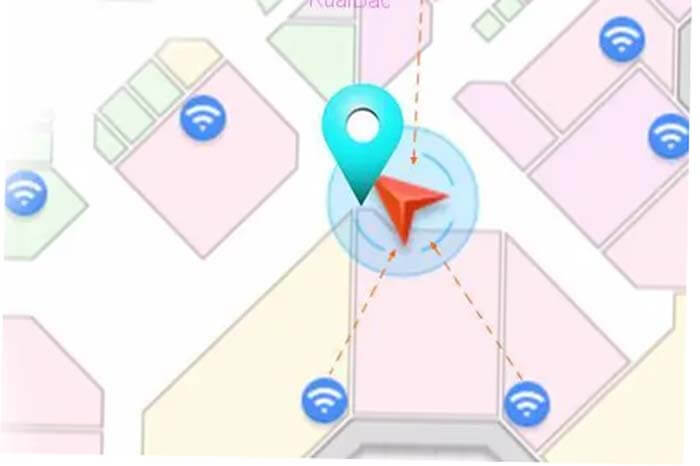
As a centimeter-level positioning technology, UWB High-precision Indoor Positioning can theoretically achieve millimeter-level or even micron accuracy.
However, when the UWB positioning system is deployed in actual scenarios, the positioning accuracy varies greatly. At present, the algorithms involved in the UWB positioning system mainly include TOF and TDOA, etc.
C&T RF Antennas Inc is the extra wideband antenna manufacturer, we analyze the 7 main factors that affect the accuracy of UWB indoor positioning from the UWB positioning algorithm, UWB base station deployment, and actual positioning scenarios.
1. Clock synchronization errors lead to errors in UWB High-precision Indoor Positioning accuracy
The TOA positioning algorithm requires precise time synchronization between the target node and the reference node, and the TDOA positioning algorithm requires precise clock synchronization between the reference nodes.
Therefore, inaccurate time synchronization will cause errors in the UWB positioning system.
2. The impact of UWB base station coordinate error on positioning accuracy
In actual positioning scenarios, for example, the coordinates of the UWB tags worn by people are relative to the coordinates of the UWB base station anchor. If the UWB base station’s coordinates themselves are wrong, the positioning data calculated by the UWB positioning engine must have the error.
3. The impact of the deployment method and number of UWB base stations on positioning accuracy
The impact of UWB base station deployment on positioning accuracy. In the actual settlement process of positioning coordinates, an increase in the number of UWB base stations means an increase in redundant information, and abundant redundant information can further reduce positioning errors.
However, UWB positioning accuracy will not continue to increase with the increase of UWB base stations. When UWB base stations increase to a certain number, continuing to increase UWB base stations will not greatly improve the positioning accuracy. And the increase in the number of UWB base stations means an increase in the cost of positioning hardware deployment.
Therefore, how to find a balance between the number of UWB base stations and positioning accuracy, so as to reasonably deploy UWB base stations is the focus of positioning accuracy.
4. The influence of multiple access interference on positioning accuracy
In a multi-user environment, the UWB signals of other users will interfere with the target signal, thereby reducing the accuracy of the estimation. One way to reduce this interference is to separate the signals from different users in time, that is, use different time slots for different nodes for transmission.
5. The influence of human body occlusion on UWB High-precision Indoor Positioning accuracy
The main component of the human body is water. Water has a strong absorbing effect on UWB wireless pulse signals, which leads to attenuation of UWB signal strength and deviation of ranging information, which affects the accuracy of later positioning.
6. The impact of multipath effects on UWB signal propagation will also cause errors in positioning accuracy
During the propagation process of the UWB positioning signal, it will be affected by the reflection and refraction of the surrounding environment, such as walls, glass and desktops, and other indoor objects, resulting in a multipath effect. The signal changes in delay, amplitude, and phase, resulting in energy attenuation and reduced signal-to-noise ratio, resulting in the first arrival signal being not a direct signal, causing ranging errors and UWB positioning accuracy.
7. The impact of UWB penetrating obstruction signal weakening on UWB High-precision Indoor Positioning accuracy
When the UWB signal penetrates an ordinary brick wall, the signal value will be reduced by about half. The change in signal transmission time caused by penetrating the wall will also affect the UWB positioning accuracy.
Besides the 7 Factors Affect UWB High-precision Indoor Positioning article, you may also be interested in the below articles.
What is the difference between WIFI and WLAN?
Summary of 41 Basic Knowledge of LTE
What Is The 5G Network Slicing?
